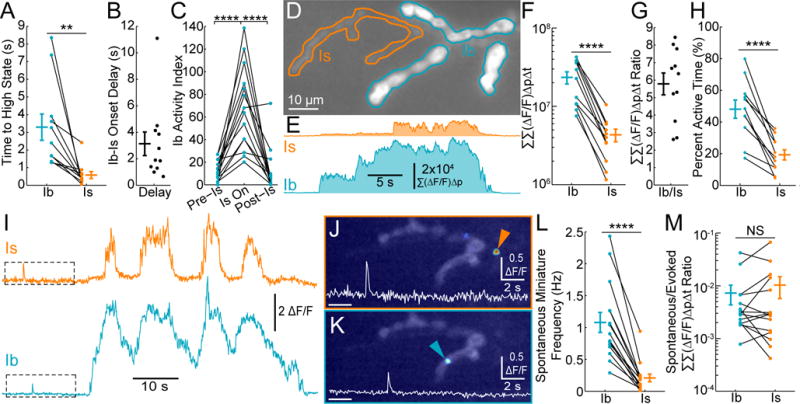
Input-specific plasticity and homeostasis at the Drosophila larval neuromuscular junction
Abstract
Synaptic connections undergo activity-dependent plasticity during development and learning, as well as homeostatic re-adjustment to ensure stability. Little is known about the relationship between these processes, particularly in vivo. We addressed this with novel quantal resolution imaging of transmission during locomotive behavior at glutamatergic synapses of the Drosophila larval neuromuscular junction. We find that two motor input types, Ib and Is, provide distinct forms of excitatory drive during crawling and differ in key transmission properties. Although both inputs vary in transmission probability, active Is synapses are more reliable. High-frequency firing “wakes up” silent Ib synapses and depresses Is synapses. Strikingly, homeostatic compensation in presynaptic strength only occurs at Ib synapses. This specialization is associated with distinct regulation of postsynaptic CaMKII. Thus, basal synaptic strength, short-term plasticity, and homeostasis are determined input-specifically, generating a functional diversity that sculpts excitatory transmission and behavioral function.